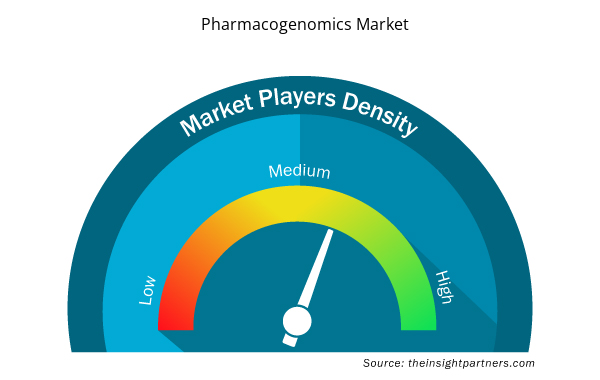Pharmacogenomics Market Size - Trends by 2031
Pharmacogenomics Market: Size and Share
-

CAGR (2021 - 2028)10.3% -
Market Size 2021
US$ 7.09 Billion -
Market Size 2028
US$ 14.11 Billion

Market Dynamics
- Increasing demand for personalized medicine
- Advancements in genomics and bioinformatics
- Rising prevalence of chronic diseases
- Growing investments in R&D
- Increasing government support for pharmacogenomics research
- Rising healthcare expenditure
- Growing adoption of pharmacogenomics in clinical practice
- Integration of AI and machine learning
- Advancements in next-generation sequencing
- Development of pharmacogenomic biomarkers
- Expansion of direct-to-consumer genetic testing
- Increased collaboration between academia, industry, and healthcare providers
- Global regulatory framework for pharmacogenomics
- Ethical considerations and privacy concerns
- Personalized medicine becoming the standard of care
- Developing novel therapeutic approaches
- Identifying drug targets
- Predicting drug response and adverse effects
- Optimizing drug dosing
- Enhancing clinical trial efficiency
- Reducing healthcare costs
- Improving patient outcomes
- Expanding into emerging markets
Market Segmentation
 Technology
Technology - PCR
- Sequencing
- Microarray
- Gel Electrophoresis
- Mass Spectrometry
 Application
Application - Drug Discovery
- Oncology
- Neurology and Psychiatry
- Pain Management
- Cardiovascular Diseases
 End User
End User - Hospitals and Clinics
- Biopharmaceutical Companies
- CROs and CDMOs
Pharmacogenomics Market Players Density: Understanding Its Impact on Business Dynamics
The Pharmacogenomics Market market is growing rapidly, driven by increasing end-user demand due to factors such as evolving consumer preferences, technological advancements, and greater awareness of the product's benefits. As demand rises, businesses are expanding their offerings, innovating to meet consumer needs, and capitalizing on emerging trends, which further fuels market growth.
Market players density refers to the distribution of firms or companies operating within a particular market or industry. It indicates how many competitors (market players) are present in a given market space relative to its size or total market value.
Major Companies operating in the Pharmacogenomics Market are:
- F. Hoffmann-la Roche Ltd
- Abbott
- Oxford Nanopore Technologies
- Thermo Fisher Scientific Inc.
- Illumina, Inc.
Disclaimer: The companies listed above are not ranked in any particular order.

- Get the Pharmacogenomics Market top key players overview
 Get Free Sample For
Get Free Sample For